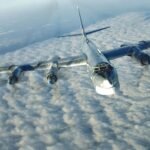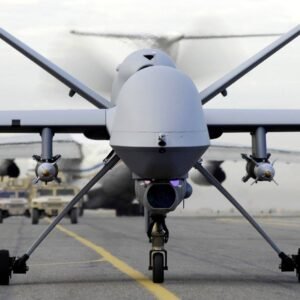Introduction
The MQ-1C Gray Eagle UAV is a medium-altitude, long-endurance (MALE) UAS primarily used by the US Army for intelligence, surveillance, and reconnaissance (ISR) missions. The Gray Eagle has a wingspan of 56 feet, can fly for up to 25 hours, and can operate at a maximum altitude of 29,000 feet.

Design and Development of MQ-1C Gray Eagle UAV
Design:- The MQ-1C Gray Eagle is a medium-altitude, long-endurance unmanned aerial vehicle (UAV) that has a modular design with easily interchangeable payloads. The drone has a wingspan of 56 feet and a length of 28 feet. It has highly powered by a heavy-fuel engine
The drone has a modular payload system that allows for the quick installation and removal of various payloads, including weapons systems, communications equipment, and electronic warfare systems. The MQ-1C Gray Eagle UAV is designed to operate in a variety of environments and weather conditions, and it has proven to be a reliable and versatile platform for a range of military operations.
Development:- The MQ-1C Gray Eagle UAV was made by GA-ASI for the US Army. The General Atomics Aeronautical Systems development of the drone began in the early 2000s as a response to the need for a more capable unmanned aerial vehicle (UAV) to support military operations in Iraq and Afghanistan.
The Gray Eagle was based on the design of the earlier MQ-1 Predator drone, but it was significantly larger and more capable. GA-ASI modified the design of the airframe, wings, and landing gear to increase the drone’s endurance and payload capacity. They also added advanced sensors and communication systems to improve the drone’s situational awareness and responsiveness.
The development of the MQ-1C involved a series of tests and demonstrations to prove the drone’s capabilities and reliability. The drone underwent extensive flight testing and was evaluated for its performance in a variety of environments and mission scenarios.
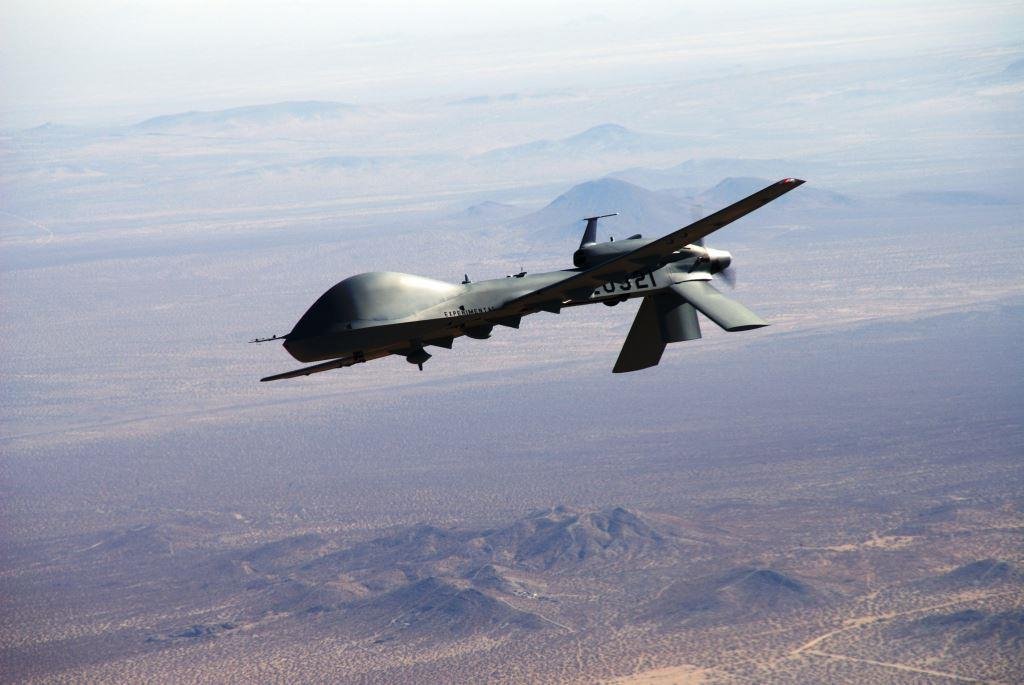
What are The Capabilities of Gray Eagle UAV?
The MQ-1C Gray Eagle is a highly capable unmanned aerial vehicle (UAV) that provides the U.S. Army with a wide range of capabilities. Some of its key capabilities include:
- Endurance: The Gray Eagle has a maximum flight time of over 30 hours, enabling it to provide persistent surveillance and support over an extended period of time.
- Payload capacity: The drone has a maximum payload capacity of 800 pounds, allowing it to carry a variety of payloads, including sensors, communications equipment, and weapons systems.
- Intelligence, surveillance, and reconnaissance (ISR): The Gray Eagle is equipped with advanced sensors, including electro-optical and infrared cameras, as well as radar and signals intelligence systems. This allows it to conduct a wide range of ISR missions, including reconnaissance, surveillance, and target acquisition.
- Communications: The drone has a datalink that enables it to communicate with ground-based control stations and other military assets. It can also act as a communications relay, extending the range of other military assets.
- Precision strike: The Gray Eagle can carry a variety of precision-guided munitions, including Hellfire missiles and precision-guided bombs. This allows it to conduct targeted strikes on enemy targets with a high degree of accuracy.
- Flexibility: The modular design of the Gray Eagle allows for the quick installation and removal of various payloads, making it a highly versatile platform that can be adapted to a wide range of missions.
What are The General Specifications of The MQ-1C Gray Eagle UAV?
- Length: 8.5 meters
- Wingspan: 17 meters
- Maximum takeoff weight: 3,600 lbs
- Payload capacity: 800 lbs
- Endurance: over 30 hours
- Maximum altitude: 8,839 m
- Maximum airspeed: 150 knots (278 km/h)
- Propulsion: Heavy fuel engine
- Automated takeoff and landing: The Gray Eagle can take off and land automatically, reducing the need for ground-based control and support.
- Sensors: Electro-optical and infrared cameras, radar, signals intelligence systems
- Armament: Hellfire missiles, precision-guided bombs, and other munitions
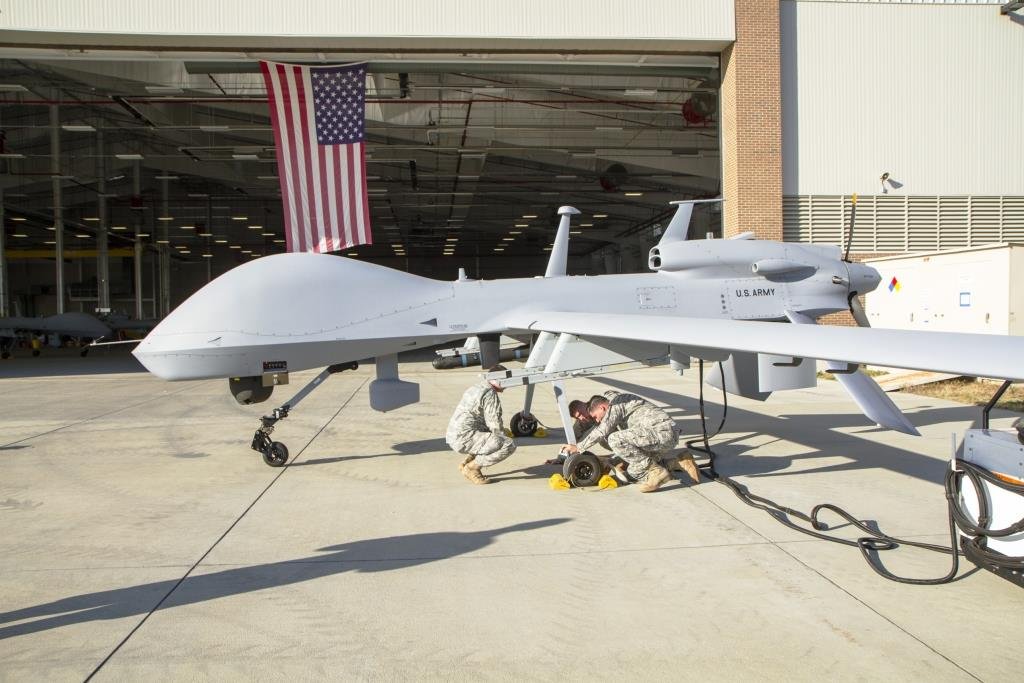
What is The Operations History of Gray Eagle Aircraft?
The MQ-1C Gray Eagle UAV has been used by the U.S. Army in various military operations since it was first introduced in 2009. The MQ-1C Gray Eagle UAV has been used in many military operations including:
- Operation New Dawn (2010-2011): The Gray Eagle was first deployed in Iraq as part of Operation New Dawn. The drone provided persistent surveillance and intelligence support to ground troops, helping to locate and track enemy forces.
- Operation Enduring Freedom (2012-2014): The Gray Eagle was also used in Afghanistan as part of Operation Enduring Freedom. The drone provided intelligence, surveillance, and reconnaissance (ISR) support to ground troops, helping to identify and track enemy forces.
- Operation Inherent Resolve (2014-present): The Gray Eagle has been used extensively in the fight against ISIS in Iraq and Syria as part of Operation Inherent Resolve. The drone has provided ISR support and conducted precision strikes on enemy targets, playing a critical role in the campaign to defeat ISIS.
- Other operations: The Gray Eagle has also been used in other military operations, including Operation Odyssey Dawn in Libya and Operation Juniper Micron in West Africa
What is the Difference Between MQ-1C Gray Eagle and MQ-9 Reaper?
The MQ-1C Gray Eagle and MQ-9 Reaper are both unmanned aerial vehicles (UAVs) that are used for intelligence, surveillance, and reconnaissance (ISR) and strike operations. While there are similarities between the two drones, there are also some key differences:
Size and weight: The MQ-9 Reaper is larger and heavier than the MQ-1C Gray Eagle. The Reaper has a wingspan of 66 feet and a maximum takeoff weight of 10,500 pounds, compared to the Gray Eagle’s wingspan of 56 feet and a maximum takeoff weight of 3,600 pounds.

Endurance: The MQ-9 Reaper has a longer endurance than the MQ-1C Gray Eagle, with a maximum flight time of up to 27 hours compared to the Gray Eagle’s maximum flight time of over 30 hours.
Payload capacity: The MQ-9 Reaper has a larger payload capacity than the MQ-1C Gray Eagle, with the ability to carry up to 3,750 pounds of munitions and other payloads, compared to the Gray Eagle’s payload capacity of 800 pounds.
Armament: The MQ-9 Reaper is equipped with a wider range of armament options than the MQ-1C Gray Eagle, including laser-guided bombs, GBU-12 Paveway II bombs, and GBU-38 Joint Direct Attack Munitions (JDAM).
Cost: The MQ-9 Reaper is generally more expensive than the MQ-1C Gray Eagle.
The MQ-9 Reaper is a larger, more capable drone than the MQ-1C Gray Eagle, with a longer endurance, larger payload capacity, and more advanced armament options. However, the Gray Eagle is a highly capable UAV in its own right, with a smaller size and lower cost that may make it a more suitable option for some missions. The choice between the two drones would depend on the specific needs and requirements of the mission at hand.
What is the Difference Between Bayraktar TB2 and MQ-1C Gray Eagle?
The MQ-1C Gray Eagle and the Bayraktar TB2 are both unmanned aerial vehicles (UAVs) that are used for intelligence, surveillance, and reconnaissance (ISR) and strike operations. While there are similarities between the two drones, there are also some key differences:
Origin: The MQ-1C Gray Eagle is a product of the United States, while the Bayraktar TB2 is made in Turkey.
Payload capacity: The Bayraktar TB2 has a larger payload capacity than the MQ-1C Gray Eagle, with the ability to carry up to 150 kg (330 lbs) of munitions and other payloads, compared to the Gray Eagle’s payload capacity of 363 kg (800 lbs).
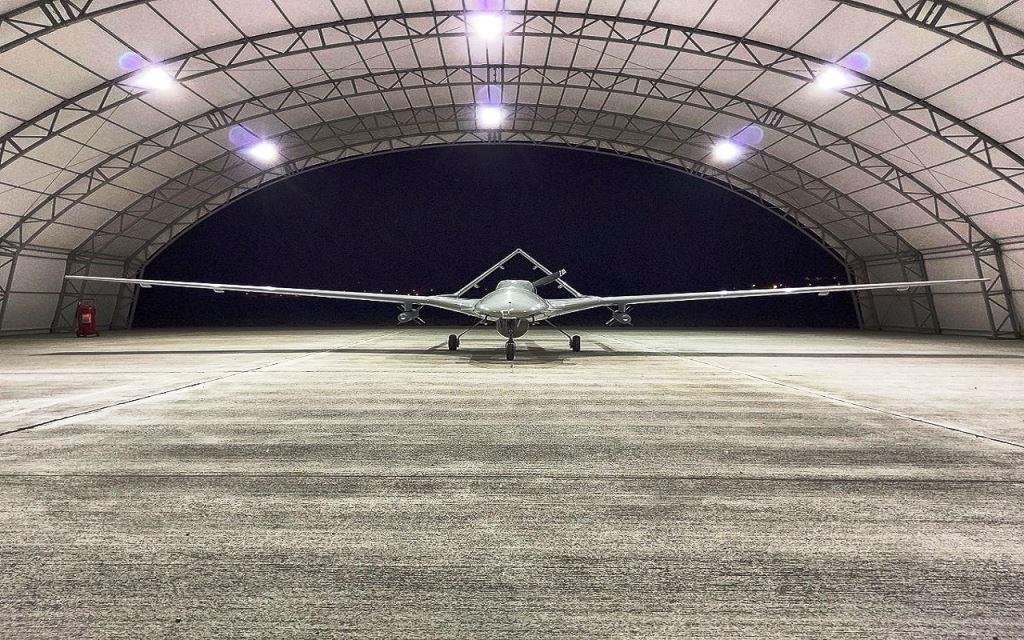
Armament: The Bayraktar TB2 is typically armed with MAM-L and MAM-C smart munitions, while the Gray Eagle is equipped with a range of armament options, including Hellfire missiles and precision-guided bombs.
Endurance: The MQ-1C Gray Eagle has a longer endurance than the Bayraktar TB2, with a maximum flight time of over 30 hours, compared to the Bayraktar’s maximum flight time of up to 27 hours.
Size and weight: The Bayraktar TB2 is smaller and lighter than the MQ-1C Gray Eagle. The Bayraktar has a wingspan of 12 meters (39 feet) and a maximum takeoff weight of 650 kg (1,433 lbs), compared to the Gray Eagle’s wingspan of 17 meters (56 feet) and a maximum takeoff weight of 1,633 kg (3,600 lbs).
Communications range: The Bayraktar TB2 has a shorter communications range than the MQ-1C Gray Eagle, with a range of up to 150 km (93 miles), compared to the Gray Eagle’s range of up to 180 miles.
Do you know about Hongdu GJ-11 UCAV?



